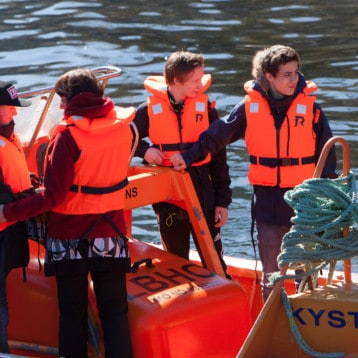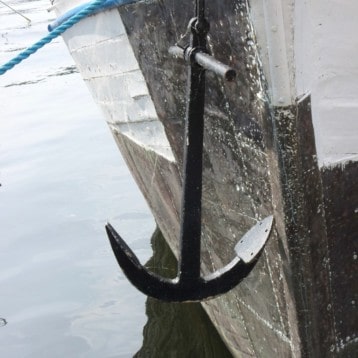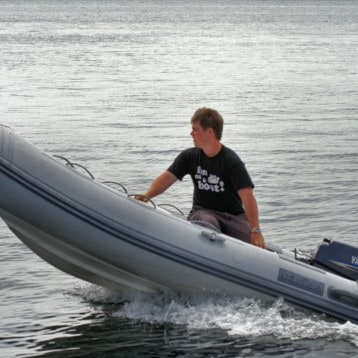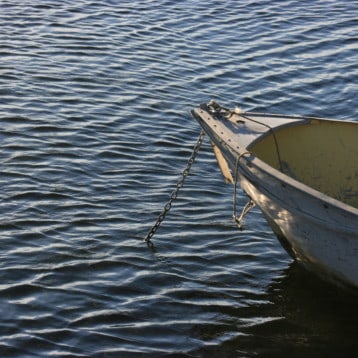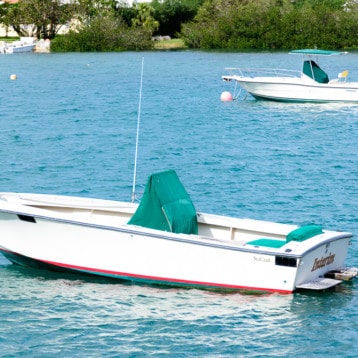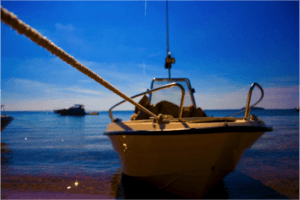
Image Credit: Flickr
With whole books describing techniques to keep your boat from drifting too far, the average mariner may appreciate an easier approach to anchoring. Anchors are basically a safety measure designed to dig further under the weight of the floor or to snag onto coral and rocky bottoms keeping your boat from drifting onto rocks or into the surf. There are a few factors which come into play when trying to anchor especially when in the midst of some rough waters. Get ready to grad a hold of that sea floor tight because this guide will blow you away.
Table of Contents
Using One Anchor
The secret to anchoring successfully is tension. The rode must be taught meaning your boat has to face the wind and be in reverse pulling the anchor deeper into the seabed creating more and more resistance and safety. In order to test this, you have to throw it into reverse and back up for a reasonable amount of time to ensure that the anchor is set. Putting this amount of strain on the anchor will only be beneficial so don’t be scared to do it. You can either make sure the anchor is set or pull the anchor farther into the floor anchoring you more. There is no other known way to ensure that the anchor will hold other than testing it.
When anchoring your ship, take the scope into consideration. That is the ratio of water depth to the amount of anchor line put out. Most anchoring experts have agreed on a recommended scope being 7:1. For a crowded anchorage, you can shorten the scope after testing the anchor’s hold. The anchor will almost always hold as much tension as the amount used to set it so make sure you test the hold well. The boat will burst forward when you ease the power demonstrating that you put tension on the rode setting the anchor, congratulations!
Now, the wind pattern changed, there’s a few ways you can tell if your boat is veering into “un-anchoring territory.” Get an electric compass or if you have autopilot, the course alarm will tell you when the boat’s heading changes drastically. You can also set an alarm on your depth sounder alerting you when the depth changes significantly so you’ll know if you are drifting away from or towards shore. The easiest way is to set an alarm on your chart plotter letting you know when the boat’s position changes drastically.
Using Two Anchors
For better control of your anchorage, you may want to consider double anchoring which will be deployed on opposite sides of your boat. Dropping one near the shore and a second offshore, you can determine your boat’s position between them. The tension of one rode can also be used to help set the second anchor. This would be the technique for anchoring off the bow and stern of your boat.
Best Anchors
When you’re in sand, you need a lightweight anchor. The best ones for this are the Danforth-style anchors such as the Fortress anchors. Mud, having low sheer strength, needs an anchor with greater fluke area. Fortress anchors happen to be the best for mud as well because they can be converted to have a wider fluke angle. When it comes to rocky bottom surfaces, it doesn’t really depend on which anchor you use, but more on where you try to set it. Try to find hard protruding surfaces and anchor onto them. We have an entire guide to helping you buy the best boat anchor, so go check that out and make sure you have the right one.
Hopefully, these tips and techniques for anchoring keep you from sinking. Remember to watch out for wind changes and keep some gadgets on hand to help you know when you veer too far away from your desired position. Always keep your scope in mind and punch it in reverse for a little while to make sure you’re all set! Happy boating!

